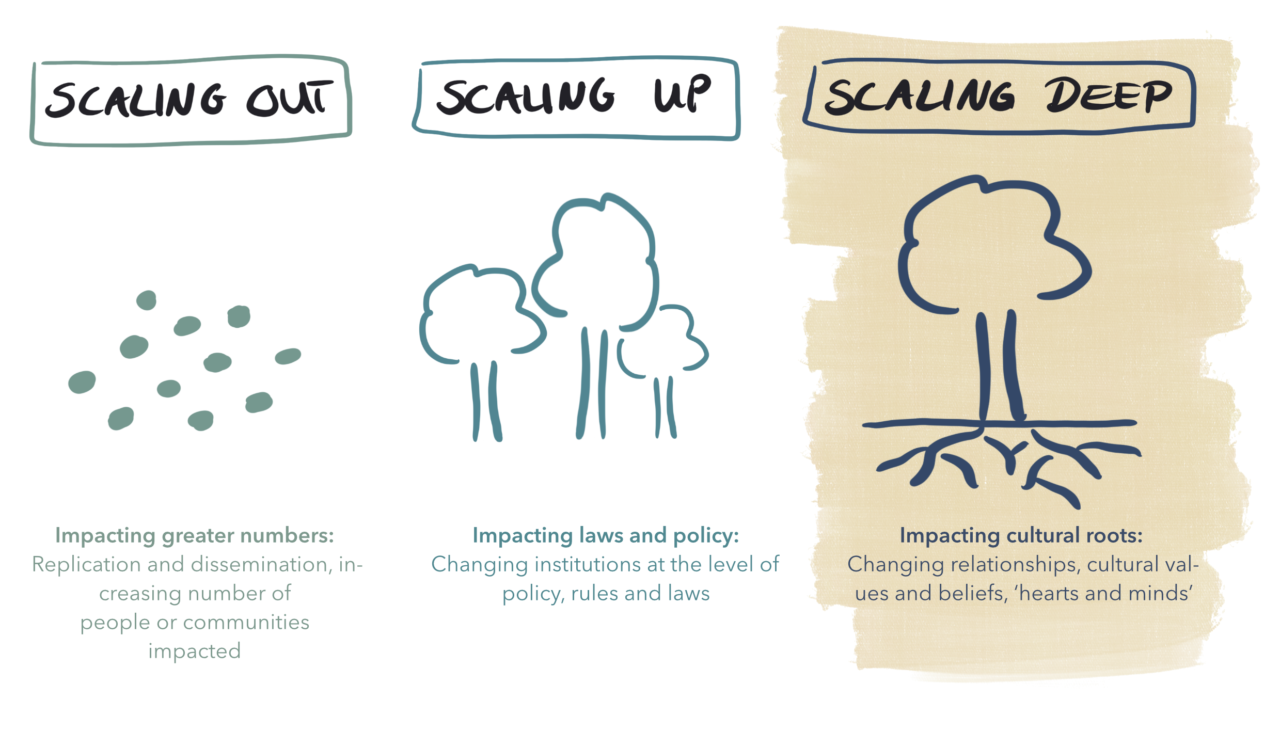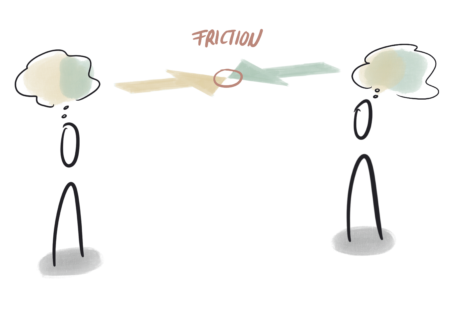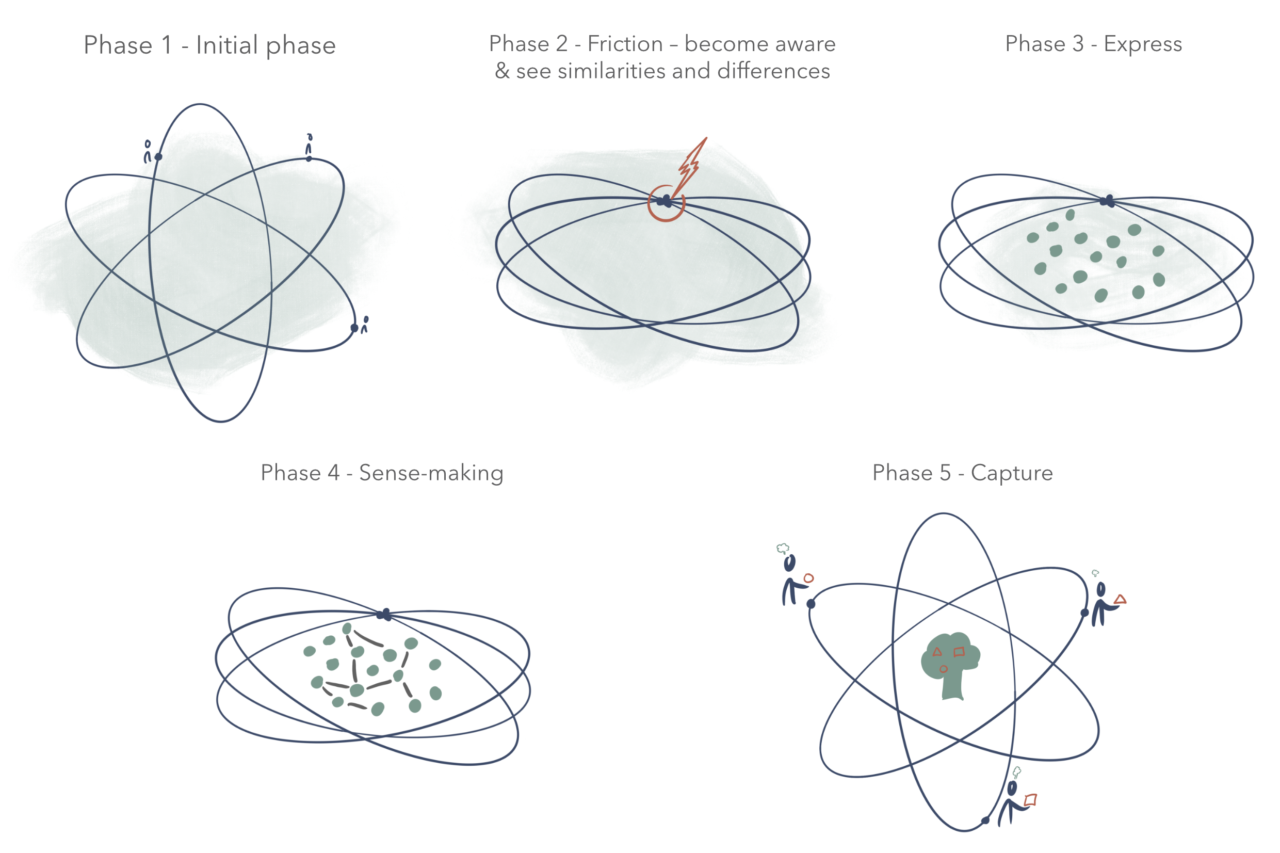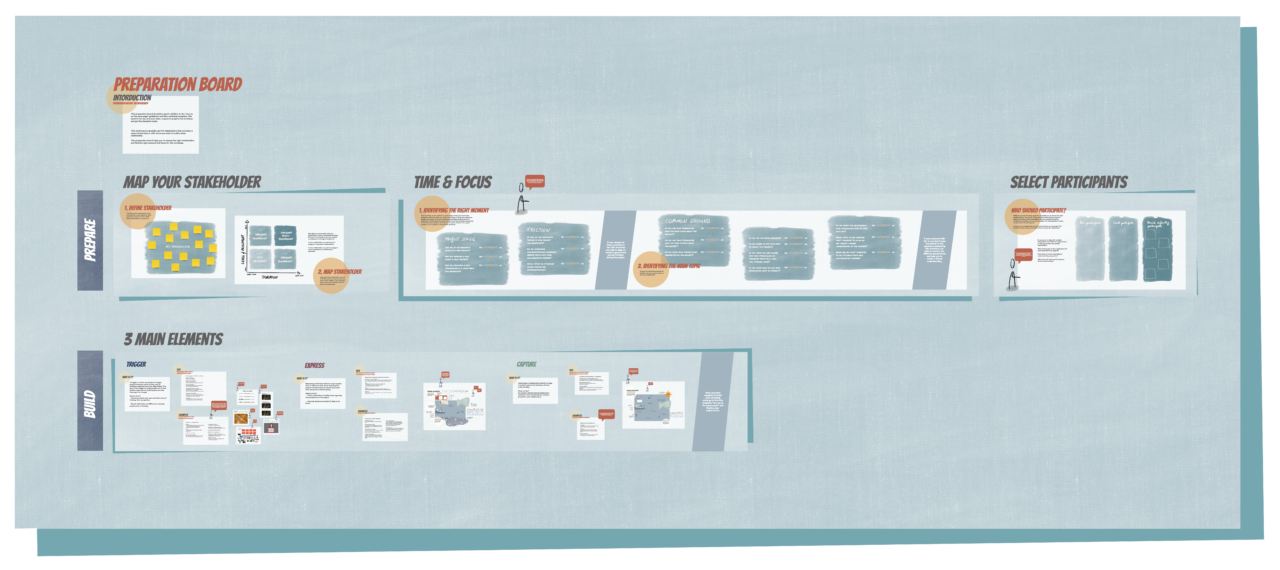Introducing fruitful friction as a strategy to scale social innovations
Enabling social innovators to reach common ground with stakeholders.
Today’s problems are getting more complex and solving them requires a systemic sustainable transition. Here, social innovation projects are becoming increasingly important to tackle global problems on a local scale. Those small initiatives apply new practices to address complex societal problems while meeting social needs. Scaling social innovations, meaning to increase their impact on society, is key in order to reach large-scale systemic change.
Strategic Product Design (SPD) master graduate Maria Belén Buckenmayer, dived into the topic of scaling social innovations to understand how they can increase their impact on society. Different strategies are found in literature that focuses on and supports different ways of scaling: scaling up, scaling out and scaling deep (Riddell & Moore, 2015).
Maria focused on one specific scaling strategy that deals particularly with changing mindsets, values and beliefs, namely scaling deep. She developed a framework and toolkit that facilitates social innovators and their stakeholders to reach common ground by using fruitful friction.

Maria worked as part of the PCM Lab and in collaboration with DESIGNSCAPES, an EU funded capacity building program focusing on supporting urban social innovators in their scaling efforts. For her project, she took a qualitative research approach to understand the processes and mechanisms that enable or hinder social innovators to scale their innovations. The combination of theoretical knowledge from an extensive literature study with the insights derived from qualitative interviews and creative sessions with social innovators enabled Maria to gain an in-depth understanding of the social innovation realm. In her research, she discovered that a lack of a shared understanding often hinders the construction of trusted relationships between social innovators and their stakeholders.

This issue is caused by the diffuse, complex and diverse nature of social innovation projects. Multiple stakeholders from different industries and organisations are involved in social innovations projects, each with their own backgrounds, ambitions, goals and experiences. Aligning all those needs and building a basic shared understanding can be often difficult for social innovators. Nevertheless, having common ground as a foundation for productive collaboration is a key condition for the success of social innovations.
The “fruitful friction towards common ground” framework
Through her research Maria has identified friction, meaning conflicting perspectives and ways of thinking, to be a catalyst for change rather than a barrier. In fact, realizing that others have different perspectives makes the person reflect on their own point of view. This increased awareness is one step to enable a transition in people’s mindset, values and beliefs. This and other insights helped Maria to develop a framework that would constitute the theoretical foundation of her toolkit.

Merging her insights into a framework, Maria developed a process that illustrates how friction can be deliberately used to enable collective sense-making and the creation of a shared understanding among social innovators and different stakeholders.

Articulated in five steps, this framework offers a way to make scaling deep a more actionable strategy. It does so by using friction to deliberately trigger stakeholders to express their implicit perspectives and facilitate openness and awareness about the different aspects that are usually not put on the table. The process starts by making people reflect on their way of thinking – their mindset – making them aware and open for change. Afterwards, they can more easily engage in collective sense-making in order to see similarities and differences in people’s perspectives. These steps allow them to build on similarities without neglecting differences and aligning on a shared understanding as a foundation for social innovators’ collaboration with stakeholders.
A toolkit to facilitate reaching common ground

To facilitate the implementation of this framework in innovators’ practice, Maria translated it into a toolkit. The goal of the toolkit is to enable social innovators to co-create common ground with their long-term collaboration partners and to facilitate a deep mutual understanding as a basis for their partnership. The toolkit provides structure and guidance to use the concept of fruitful friction and enables innovators to create a customized alignment workshop to embark on what Maria called a “scaling deep towards common ground“ journey.
Off to new shores – Sailing towards common ground.
The centrepiece of the toolkit is an interactive (online) workshop that helps social innovators and their stakeholders co-create their shared understanding of main concepts regarding their joint project by applying the concept of fruitful friction and using the metaphor of sailing.

The goal of the online workshop is to make people aware of their own and others way of thinking to identify similarities and differences in perspectives and co-create a common vision and project path. It is a tool to connect and communicate with stakeholders on a deeper level that leads to meaningful relationships and impacts each individual’s understanding regarding the project.
In the workshop, the metaphor of ‘Sailing towards new shores’ is used to allow participants to make use of metaphorical language and express their implicit perspective more easily. The metaphor is also used to create an engaging, immersive and lasting experience. Participants are guided through three main activities each focusing on a different aspect.
- Getting ready
The first activity focused on uncovering general mental constructs and perceiving certain aspects of each individual, for example, their perception of challenges or the success of others. It is an individual exercise to trigger people to become aware of their and others’ internal frame. The objective of the trigger is to nudge people out of their comfort zone into the “learning zone” to make them open to change (Senninger, 2000).
2. Preparing the mission
This is an individual activity to give people time to reflect on their stand and role regarding their innovation project. E.g. How they see their role in the project, how they personally envision the outcome, what they consider the best route to get there. This step allows in particular to make explicit similarities and differences in the perspectives that participants have on the project. Additionally, this grants all opinions and points of views to be heard in the group.
3. Exploring the new world
The last activity entails the co-creation of a common mission. All participants work on one board and together define their shared understanding of how to proceed with the project together. The set-up of this activity is similar to the second one but now the focus is on the joint journey. Aspects that have been articulated on the previous board are taken back to negotiate a common understanding of them. For example, the common values or a joint future vision. Engaging together in this collective sense-making activity helps to create acceptance and ownership of the project.
Overall, the process allows social innovators to understand their stakeholders’ implicit perspectives (how people think, what they value and consider important) and creates a space for fruitful discussions of the different point of views. Similarities and differences of individuals perspectives are made explicit and the creation of a shared understanding (regarding the project goal and vision is created). Moreover, this process helps to build trust and co-ownership between partners and prevents misunderstandings about key concepts of the collaboration that otherwise might emerge unnoticed in later stages of the project and cause troubles.
In addition to the digital canvases, to run the online workshop Maria also developed a guidebook and preparation template that provide background information to social innovators and help them to prepare and conduct the workshop.

On a path towards a more collaborative innovation
The framework and toolkit developed by Maria exemplify one way to make the scaling deep strategy more tangible and help innovators reach common ground with other stakeholders. When long term collaborations are established based on shared values and a shared mindset, social innovation processes can more easily spread and potentially positively impact a whole society.
Achieving change at a large scale can be a long process. Maria’s project presents a starting point to impact cultural roots and relationships, change values and mindsets. Not by forcing one’s perspective onto someone, but by creating an environment of open exchange and respect to embrace the diversity of viewpoints.
Through her project, Maria experienced first-hand the value of collaboration, co-creation and embracing friction to bring change. This experience has enriched Maria’s identity as a Social Strategic Designer, showing her the importance of designers’ ability to facilitate collaborations and communicate visually, as well as critically reflecting and questioning the status quo. This awareness ultimately strengthened her ambition to work in the social and environmental field, and contribute her part towards a sustainable future.
If you are interested to try out the toolkit or read more about Maria’s project you can download her report and additional material here.
To see her graduation video click here.
Riddell, D., & Moore, M. L. (2015). Scaling out, scaling up, scaling deep: advancing systemic social innovation and the learning processes to support it. JW McConnell Family Foundation. Tamarack Institute. Retrieved October, 5, 2016.
Senninger, T. (2000). Abenteuer leiten-in Abenteuern lernen: Methodenset zur Planung und Leitung kooperativer Lerngemeinschaften für Training und Teamentwicklung in Schule, Jugendarbeit und Betrieb. Ökotopia Verlag.